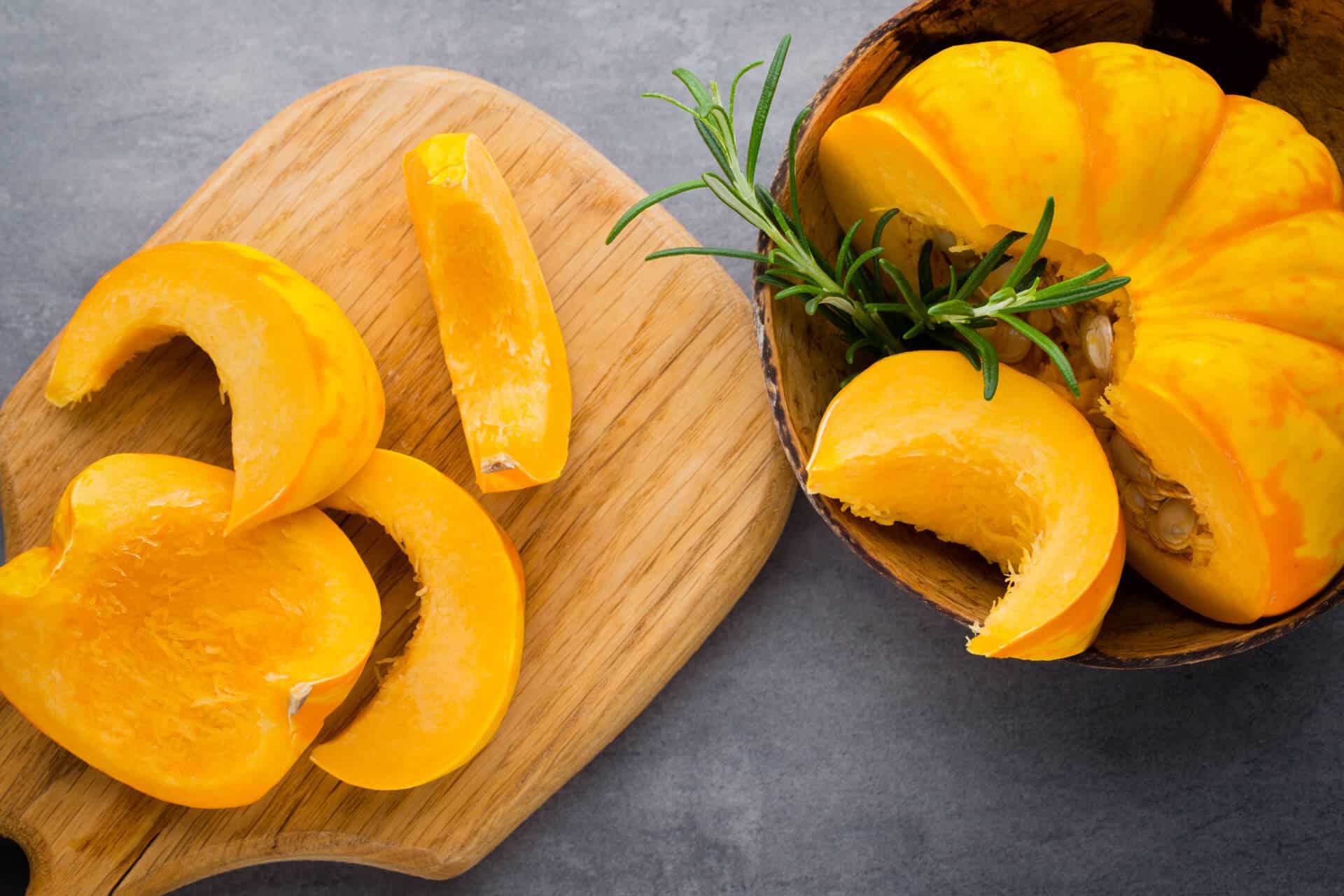Pumpkins have been celebrated in recent years — from festive decorations to debatably-delicious lattes. That classic pumpkin spice flavor permeates cereal, pies, drinks, oatmeal, and even candies.
Pumpkins are associated with indulgence, fun, and family celebrations — but, they didn’t start that way.
So, why are pumpkins so popular? When did they become such a staple of our celebrations? Let’s find out!
The Origin of Pumpkin
According to Cindy Ott, author of “Pumpkin: The Curious History of an American Icon,” the pumpkin has served many purposes over the years, from a symbol of the harvest and community to a pillar of the imagined lore of the first Thanksgiving.
What is a Pumpkin?
Technically, because it has seeds, a pumpkin is a fruit — however, it is more nutritionally similar to vegetables.
All of our fond associations for pumpkins are entirely imagined.
Genetically, pumpkins are identical to squash. They were originally not treated with much regard, they weren’t served at the first American Thanksgiving, and they weren’t even the first food to be carved into a jack-o’-lantern.
The Decadence of Pumpkins
While pumpkins were not generally revered, squashes have been associated with decadence for generations. The round shape and easy cultivation made them a common target for fertility and creation tales.
After visiting the Americas, colonists even brought pumpkins back to Europe as souvenirs. The squash seeds were distributed throughout Europe as thank you gifts to Royal patrons.
Also Associated with Stupidity
These beloved orange squashes were also associated with stupidity.
According to Johannah King-Slutzky:
“On the less sexy end of the rube spectrum, pumpkins have been associated with stupidity since the Roman philosopher Seneca auspicated the tradition of ‘pumpkinheads’ in his rebuke of Emperor Claudius. And Falstaff, dum-dum par excellence, is characterized by Shakespeare as a ‘gross watery pumpion [pumpkin]’ in The Merry Wives of Windsor. Like Claudius (and sort of Falstaff), the anthropomorphic pumpkin is always foolish yet aggressive: Before there were scarecrows and jack-o’-lanterns, Americans traded folk tales about animated vines and pumpkins so huge they had to be harvested by teams of axe-wielders, only to find their faith belied by a family of pigs trapped inside.”
A Symbol of New World Perseverance
While Europeans tended to treat pumpkins in an insulting manner, Americans decided to adopt it as a positive symbol.
Even so, pumpkin was a decidedly low-class food. In fact, until the 19th century, pumpkin was eaten primarily as slave and hog feed. It was also used as a poor man’s alternative to malt, molasses, and sugarcane.
The First Published Pumpkin Pie Recipe
American Cookery, the first American cookbook from 1796, showcased a version of pumpkin pie that was loaded with rich cream and eggs. It was subtitled as “adapted to this country, and all grades of life.”
Strong Family Connotations
Pumpkins were generally grown on family farms or plantations. In fact, up until 1955, pumpkins could not even be harvested with machinery.
Even after machinery could help harvest pumpkins for eating, almost no machine could be used on ornamental pumpkins because it could damage the skin. This is why pumpkins are grown mostly on small family farms. Many family farms even sell the experience of pumpkin picking.
Moving Into the Spotlight
Over time, the modest pumpkin became a staple at every Thanksgiving table. Martha Stewart made pumpkin pie recipes desirable. Even heirloom pumpkins and other gourds were used as decorative food serving dishes at elaborate celebrations.
Traditional jack-o’-lanterns in Ireland were actually carved with turnips. The practice of carving turnips originated with an Irish myth about a man nicknamed Stingy Jack.
To sum up the myth quickly:
- Stingy Jack played several unsavory tricks on the Devil.
- When Jack died, God would not allow such an unsavory figure into heaven.
- The Devil, upset by Jack’s tricks, would not allow Jack into hell.
- Instead, the Devil gave Jack a burning coal for light and sent him out into the dark night.
- Jack placed the coal inside of a carved-out turnip and has been roaming the Earth with it ever since.
- The Irish started to refer to this ghostly figure as “Jack of the Lantern,” and then more simply “Jack O’Lantern.”
The first jack-o’-lanterns started to appear in America with the stories of The Legend of Sleepy Hollow. However, it wasn’t until 1897 when the Ladies Home Journal suggested to use jack-o’-lanterns to add weirdness and quaintness to your holiday decorations.
Pumpkins Today
Now you can find the humble pumpkin in a variety of recipes and celebrated across the multitude of dishes and decorations.
Pumpkins have some surprising nutritional benefits that make them a great fit for our healthy recipes.
- Pumpkins have a high antioxidant content that can help reduce your risk of chronic diseases.
- Pumpkins are loaded with vitamins that help boost your immune system, such as Vitamin A, C, E, iron, and folate .
- Pumpkins are high in vitamin A, lutein, and Zeaxanthin that may help protect your eyesight.
- The pumpkin’s high nutrient density and low calorie count could potentially help promote weight loss.
Pumpkin is also really easily used in a wide variety of recipes. Hungry for the taste of the season without all the work? Try Outrageous Baking‘s gluten-free and dairy-free pumpkin baked goods today.


